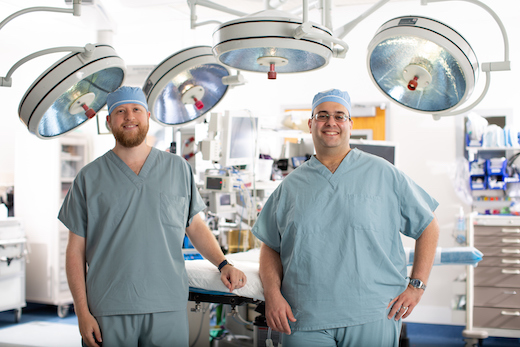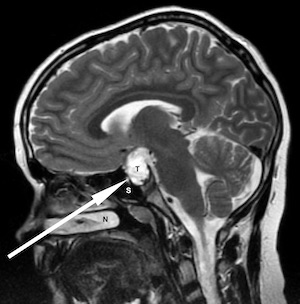Pediatric pituitary and skull base services
The UF Health Comprehensive Skull Base Surgery Center in Gainesville proudly treats pediatric patients with pituitary and skull base conditions. Those who entrust us with their care will benefit from our multidisciplinary approach and advanced technology, which distinguishes us from most institutions.
UF Health Shands Children’s Hospital cares for patients from birth to age 21. We provide initial consultation, surgery and continued post-operative care. Our neurosurgeons and nurse practitioners have all received advanced pediatric training, which is crucial in caring for the unique needs of children and adolescents.

Top-Notch, Minimally Invasive Care
When it comes to treating a variety of benign and malignant pituitary and skull base lesions, a safe and effective alternative to open approaches has become increasingly popular in recent years.
Pediatric neurosurgeons have the option to gain access to the pituitary and skull base through the nostril, known as the endoscopic endonasal transsphenoidal approach. This minimally invasive method offers exceptional visualization, no visible incision and typically a more rapid recovery than open procedures.
In close collaboration with pediatric ENT surgeons, pediatric endocrinologists and pediatric neuro-oncologists, UF Health pediatric neurosurgeons in Gainesville are uniquely prepared to care for patients with pituitary and skull base lesions.
Our leading-edge neurosurgical microscope and endoscope systems allow our experienced surgeons to clearly see and operate upon deep regions of the brain with minimal disruption of surrounding areas.
Advanced Technology

The advanced technology available at UF Health Shands Children’s Hospital helps our pediatric neurosurgeons to deliver outstanding results for children with pituitary and skull base conditions.
- Intraoperative MRI - Our staff leverages pediatric intraoperative MRI, or iMRI, to obtain precise pictures of the brain, which guide neurosurgeons in removing brain tumors and other abnormalities during neurosurgery. Real-time images of the brain during a procedure help the neurosurgery team to immediately determine more precisely if they have successfully removed brain tumors and other abnormalities, versus having to wait for a follow-up MRI and possible additional surgery. This level of accuracy with the most technically advanced equipment helps us provide the best possible outcomes for our patients.
- Stereotactic navigation - Another crucial device is the computerized navigation system which helps our neurosurgeons precisely target brain regions using virtual 3D models made from the patient’s own imaging.
- Intraoperative ultrasound – This dynamic imaging modality uses soundwaves to create real-time pictures of the inside of the brain on a computer monitor.
- Neurophysiologic monitoring - The neurosurgery team also works closely with the intraoperative neuromonitoring team for operations that involve the most sensitive portions of the brain. Throughout the surgery, the function of the patient’s nerve pathways is being monitored on a computer to maximize the safety of the procedure.
These advanced techniques can be performed along with the surgery in one location in our state-of-the-art hybrid operating rooms. This allows our surgical teams to accommodate several different procedures simultaneously, preventing the need for patients with complex conditions to be transported to different locations.
Community and Patient Programs: Pediatric pituitary and skull base services
Our community and patient programs provide great value to patients, families and loved ones. People can find support, educational materials, expert consultants and more. In most instances, these programs are offered free of charge.
-
Pediatric Social Workers
Offer counseling, planning and other assistance to all pediatric patients.
